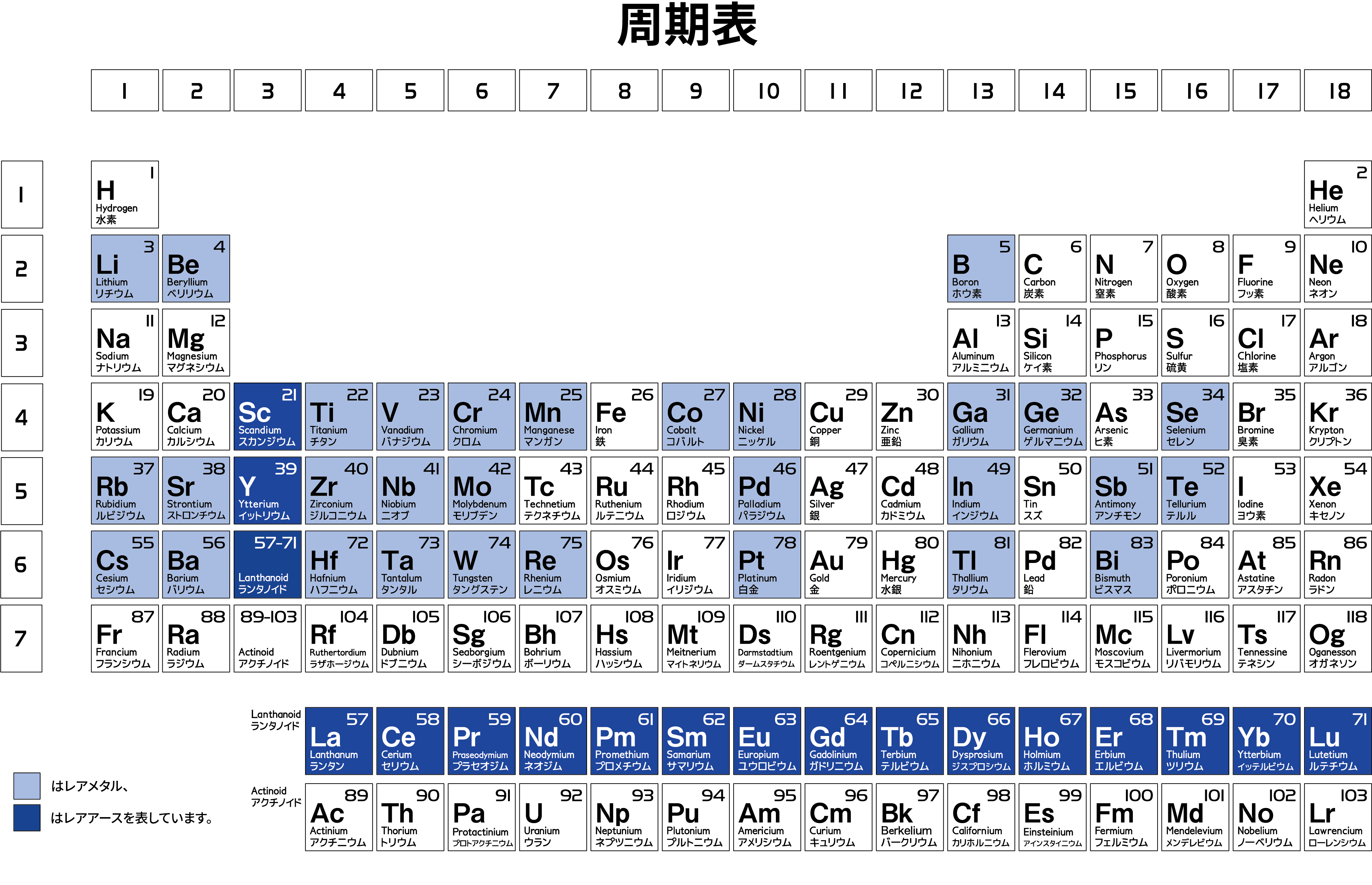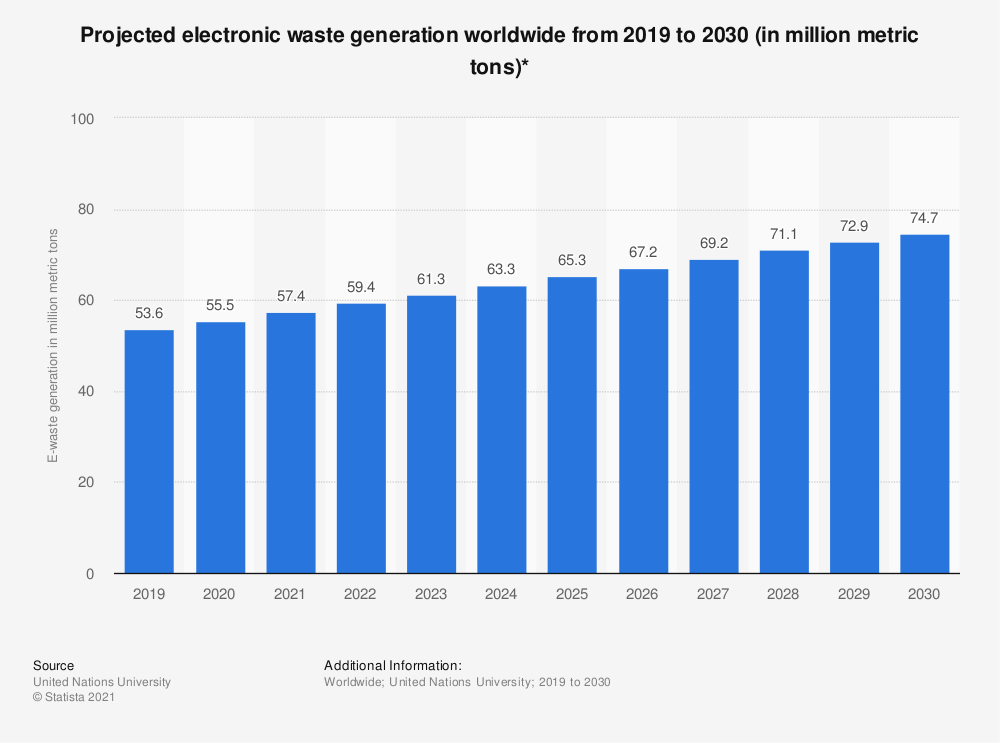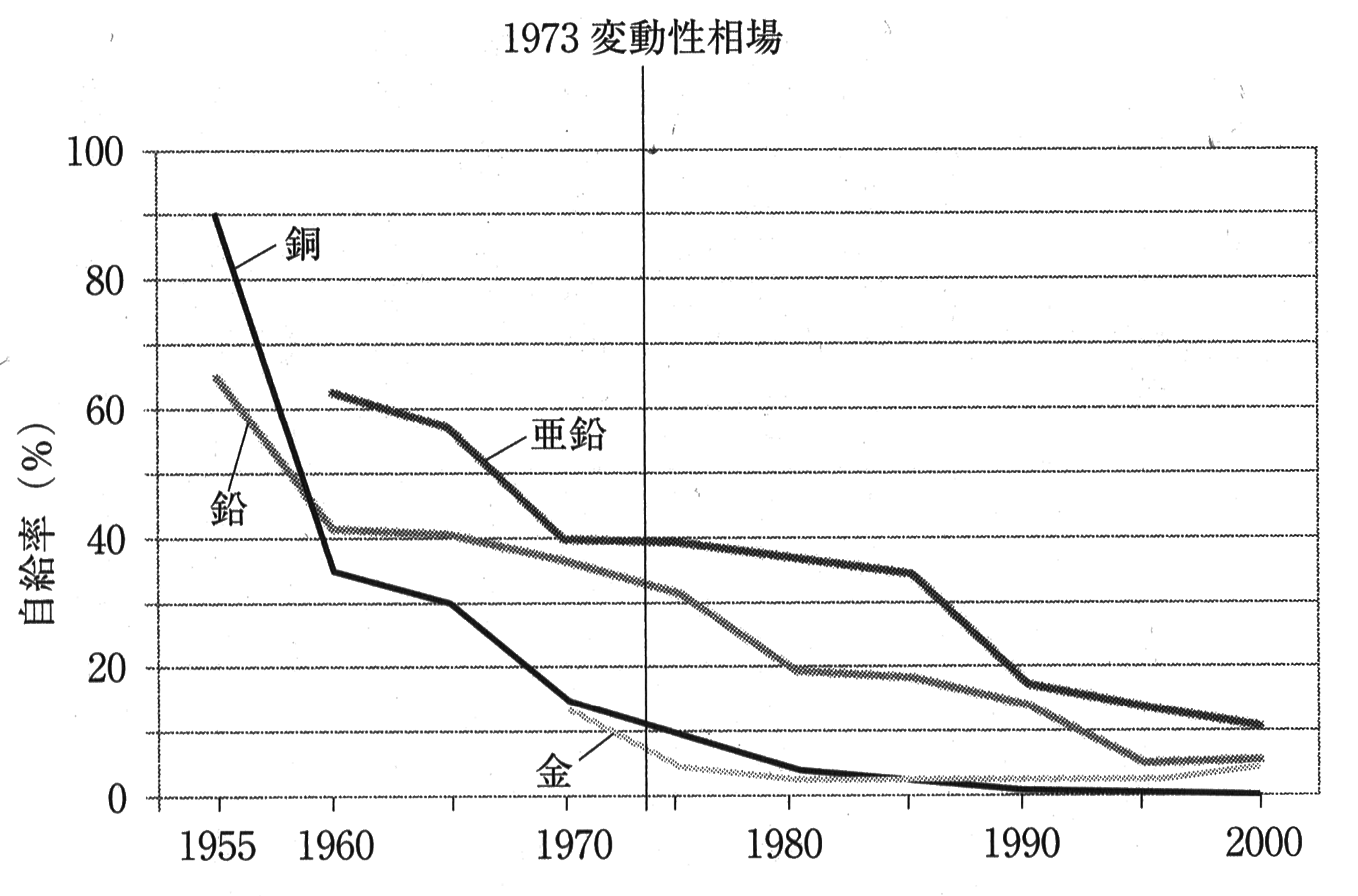都市鉱山の意義
資源問題解決の1つの手がかりとなる都市鉱山。 それは一体どのようなものなのでしょうか。
レアメタルとメジャーメタル
なぜ人はそこまで金属資源
金属資源
鉱物資源の一種。さらにレアメタル、メジャーメタルに分けられる。
を求めるのでしょうか。それは金属資源が家電や最新技術に欠かせないものだからです。ここではそんな金属資源についてもっと詳しく解説していこうと思います。
今までは金属資源という言葉を使ってきましたが、実はそれには二種類あります。その二種類とはマイナーメタル
マイナーメタル
1.地殻中の存在量が比較的少ない元素
2.単体として取り出すことが技術的に困難な元素
3.資源の産出国が偏在している
を満たす元素のことを言い、現代の産業に欠かせない”産業のビタミン”と呼ばれる。別名レアメタル。
とメジャーメタル
メジャーメタル
鉄、銅、亜鉛、アルミニウムなどの精錬が容易で大量に存在する金属のこと。別名ベースメタル。
です。
メジャーメタルとは鉄、銅、亜鉛、アルミニウムなどの精錬が容易で大量に存在する金属のことであり、それ以外の金属のことをマイナーメタルと呼びます。
ただし、存在量は少なくてもメジャーメタルに分類される元素(金、銀など6種類)もあります。
※ なお、日本ではマイナーメタルをレアメタルと呼ぶことが多いため、当サイトでも以降、レアメタルと呼ぶことにします。
レアメタルという言葉は皆さんも聞いたことがあるのではないでしょうか? レアメタルは、
- 地殻中の存在量が比較的少ない元素
- 単体として取り出すことが技術的に困難な元素
- 資源の産出国が偏在している元素
の3つを満たす元素のことを指し、リチウムやクロムなど47種類の元素で構成されています。(表2.1)

メジャーメタルは電線や各種ケーブル、メッキ、などに利用される一方で、レアメタルは、超伝導材料や形状記憶合金、水素吸蔵合金としてIT関連分野や環境保全などハイテク分野に使われており、携帯電話、パソコン、自動車、テレビ、腕時計、ドライヤーなどの身近なものに欠かせないものとなっています。(表2.2) このことからレアメタルは「産業のビタミン」と呼ばれることがあります。
携帯電話については実際に解体しました。実験の様子はこちらから。
| 金 | 銀 | 銅 | 鉄 | アルミニウム | |
|---|---|---|---|---|---|
| 携帯電話 | 0.04 | 0.23 | 10.82 | 1.17 | 0.64 |
| ノートパソコン | 0.27 | 0.31 | 59.25 | 13.26 | 7.34 |
| デスクトップパソコン | 0.36 | 0.93 | 344.43 | 22.96 | 82.01 |
数値の算出方法:(年間の含有量)/(年間排出台数)の値を少数第3位で四捨五入

※金属資源はレアメタル、メジャーメタル、貴金属 貴金属 金 (Au)、銀 (Ag)、白金 (Pt)、パラジウム (Pd)、ロジウム (Rh)、イリジウム (Ir)、ルテニウム (Ru)、オスミウム (Os) 、レニウム(Re)を総称して言う。 の3種類に分類されることもあります。その場合、金や銀などを含めた9種類の元素が貴金属に属します。
都市鉱山とは
前述のような資源問題に対して南條道夫教授(当時東北大学選鉱製錬研究所教授)が1988年に提唱された考えが都市鉱山と呼ばれるものであり、このサイトのメインテーマです。
まず、この都市鉱山の定義は、 ”都市鉱山(としこうざん、英語: urban
mining,
e-waste)とは、都市でゴミとして大量に廃棄される家電製品などの中に存在する有用な資源(レアメタル
レアメタル
1.地殻中の存在量が比較的少ない元素
2.単体として取り出すことが技術的に困難な元素
3.資源の産出国が偏在している
を満たす元素のことを言い、現代の産業に欠かせない”産業のビタミン”と呼ばれる。別名マイナーメタル。
など)を鉱山に見立てたものである。” とされています。(Wikipediaより)
この都市鉱山について、データを交えながら詳しく見ていきましょう。
下のグラフ(図2.1)は主な金属資源の一次資源
一次資源
まだ地中から掘り出されていない地下資源。
と二次資源
二次資源
地中から既に掘り出された地上資源。
の量を示したものです。

Data Source : 日本金属学会より引用
これを見れば全体の資源のうち半分以上がすでに掘り出された二次資源 であることがわかります。したがって、資源確保が重要な今、携帯電話のような小型家電などに含まれている二次資源を回収するのがカギとなっています。 ここまで読むと、そのような小型家電がただのゴミではなく有益な資源に思えてきたのではないでしょうか。 2021年に新たにゴミとなる小型家電の量は5740万トンにも上り、それは今後も増えていくと予想されています。(図2.2)

Data Source : Statistaより引用
この大量の有益な資源を鉱山に見立てたのが都市鉱山なのです!
日本における都市鉱山
ジパングは大陸から1500マイル離れた東方の島でとても素晴らしい。(中略)その島を治める者の宮殿は、我々の教会が鉛でふかれているのと同じように、その屋根は純金でふかれており、その価値はほとんど推測できない。さらに、宮殿の道、部屋の床は指2本分の厚みの純金の板でできている。そしてその窓も金でできており、総じてこの宮殿の豪華さは全ての限界と信用を超えている。
— マルコポーロ『東方見聞録』
(Wikisource, The Travels of Marco Poloより引用、メンバーが和訳)
今の私たちからすると信じがたいような話ですが、日本はかつてこのように言われていました。 それほど日本に金があったかどうか真偽のほどは定かではありませんが、昔から日本は金銀銅等を海外に輸出できるほど金属資源に恵まれていました。 特に銅に関しては17世紀後半から18世紀前半までは、日本が世界一位の生産国でした。 それでは現在の日本の金属資源の状況はどのようなものなのでしょうか? 戦後に対外貿易の自由度が増し、海外から鉱物がたくさん日本に入ってきたため海外への依存度が高まり、自給率 自給率 国や地域など一定の範囲内で消費される材料などの物品や、製品の材料や素材となる物品をその範囲内で自ら生産や産出し供給して、それらの全需要量を満たしているかを示す割合。 が急激に下がってしまいました。(図2.3)
そして今、日本での現在稼働中の主な鉱山は鹿児島県にある菱刈(ひしかり)鉱山のみになってしまいました。 しかし、実は日本は世界に引けを取らない資源大国なのです! 日本は戦後多くの金属資源を海外から輸入し、その金属資源から製造した製品のうち約半分を世界中に輸出するという形で、急激な経済発展を遂げました。 そして、残りの輸出しなかった分の金属資源は製品として国内に残っています。 これが日本での都市鉱山の主な材料となり、それが日本の資源における潜在的なアドバンテージとなっているのです。 例えば、金の埋蔵量を見てみると下のグラフ(図2.4)の通り、実に日本だけで世界全体の10%を占めます。 銀についても、世界の11%が日本に眠っています。 メジャーメタルだけでなくレアメタルの国内埋蔵量も驚くべき数字です。 クーラーや冷蔵庫の冷媒材料に使われるアンチモンでは、世界全体の埋蔵量のうちの22%は日本が占めている状況です。 このようなデータを見ると日本での都市鉱山の開発が一層効果的であることがわかります。 また、都市鉱山を活用することで海外からの輸入量が減り、前述のような資源の偏在から生まれる立場の格差問題の解消にもつながります。 さらに日本に関しては、輸入に頼らなくても大丈夫だということを海外にアピールできる保険のような役割も担うことができます。 これらの利点を考えると、日本はまさに都市鉱山を最も活用すべき国の1つなのです。

違法な都市鉱山
都市鉱山の考えに則り、使用済みの電子機器などをリサイクルするのはかなりの費用がかかるため、先進国から出た廃電子機器が途上国の処分場に放置されるということが起こるようになりました。 当然途上国にはそれらをリサイクルするほどの余裕がありませんから、燃やして灰にならなかったものは近くの川や海に捨てられます。 この事態はさまざまな問題を生み出しているのです。 まず、廃棄物を燃やした時に大気中に出る硫黄酸化物や炭化水素類は、呼吸器系の慢性障害を生む可能性が高いほか、ときには失明につながることがあります。 また、残骸が川や海に捨てられたり、雨水によって鉛や水銀などが流されたりすることで土壌や水源が汚染され、その水を飲み水として利用した人に健康被害が及ぶようになりました。 例を挙げると、処分場がある中国・汕頭市の貴嶼の子どもたちは鉛の血中濃度が高く、おそらくそのためか発育阻害になりやすく、また現地の流産率も6倍に増えています。 現地の人への影響はそれだけにとどまりません。 廃電子機器には多くの鉄や銅、アルミニウムが含まれています。 これらのメジャーメタル メジャーメタル 鉄、銅、亜鉛、アルミニウムなどの精錬が容易で大量に存在する金属のこと。別名ベースメタル。 は先進国では価値が高くありませんが、途上国ではそれなりの価値を持ちます。 そのため、それらを求めて廃品をあさり、利益を得ようとする人が処分場には群がっているのです。 しかしこうした行為は決して安全なものではありません。廃棄物を破壊することで有害物質が出る上、当人も有害な蒸気や物質に触れます。 そうした過酷な環境で手に入れたメジャーメタルを売っても一日当たり数ドルというのが関の山です。 そしてこういった人の多くが将来を担う十代以下の若者なのです。 こうした状況下では途上国の発展は望めません。 ここで振り返ってみてください。 このようになったそもそもの原因は私たち日本を含め先進国が国内のゴミの管理をきちんとせず、途上国に任せているところにあるのです! その背景にはコスト問題等さまざまな課題がありますが、その壁を乗り越えた上で都市鉱山がより活用されるようになると、未来はより明るくなるでしょう。まとめ図解
都市鉱山の活用が、あらゆる問題を解決する重要なキーであることが確認できましたか?
参考文献
- 『図解よくわかる「都市鉱山」開発』(原田幸明・醍醐市朗、日刊工業新聞社・2011年8月1日)
- 『資源論 メタル・石油埋蔵量の成長と枯渇』(西山孝、丸善出版・2016年4月12日)
- 『レア RARE 希少金属の知っておきたい16話』(キース ベロニース 著・渡辺正 翻訳、化学同人・2016年3月10日)
- 『「金属」のキホン (イチバンやさしい理工系)』(田中和明、SBクリエイティブ・2010年10月22日)
- あさがくナビ「レアアースとレアメタルの違い」
- NIMS「レアメタルの基礎知識」
- 我が国の銅の需給状況の歴史と変遷
- AFPBB News「中国「リサイクル産業の都」が払う電子ごみ処理の代償」
- ELEMINIST「2021年注目のバーゼル条約 脱プラスチックへ向けた改正内容を解説」
- Wikisource
Significance of Urban Mining
Urban mining is a key to resource problems. What is it like?
Minor metal and Major metal
Why do so many people crave
metal resources
metal resources
A kind of mineral resource. It is further classified into
minor metals and major metals.
? That’s because it is indispensable for home appliances and
cutting-edge technology. In this chapter, we would like to talk about
those metal resources. We have used the word “metal resources" so
far, but actually it is largely separated into two kinds. They are
minor metals
minor metals
Elements that satisfy the following conditions:
1.
relatively low abundance in the earth's crust,
2.
technically difficult to extract as a single element, and
3. unevenly distributed in resource-producing
countries.
and
major metals
major metals
A metal which is easily refined and exists a lot, such as
iron, copper, zinc, and aluminum. Also known as base
metal.
. Major metal is metal that is easy to refine and there exists a lot
in the earth, although some elements are classified as major metal in
spite of their rarity (six kinds such as gold, silver, etc).
Have you ever heard of minor metal? Minor metal is elements that meet these standards:
- relatively less in the earth’s crust than other elements
- hard to take out from ore as simple substance
- unevenly distributed in the world
Minor metal includes 47 elements such as lithium and chromium.(table 2.1)

Major metal is used for electric wire and cable and plating while minor metal is used for high technology like smartphones, superconducting material, shape memory alloys and metal hydride alloys. Minor metal is essential to our lives and called “vitamins of industry."
We disassembled a feature phone and a smartphone. You can check the experiment here.
| Gold | Silver | Copper | Iron | Aluminum | |
|---|---|---|---|---|---|
| Smartphone | 0.04 | 0.23 | 10.82 | 1.17 | 0.64 |
| Laptop PC | 0.27 | 0.31 | 59.25 | 13.26 | 7.34 |
| desktop PC | 0.36 | 0.93 | 344.43 | 22.96 | 82.01 |
(the amount of metal in home appliances thrown away in a year) /
(the number of home appliances thrown away in a year), rounded to the nearest third.
* Metal resources are sometimes classified into three kinds, minor metals, major metals, and precious metals precious metals Gold (Au), silver (Ag), platinum (Pt), palladium (Pd), rhodium (Rh), iridium (Ir), ruthenium (Ru), osmium (Os), and rhenium (Re). . In this case, nine elements including gold, silver, etc. are classified as precious metals.
What is Urban Mining?
In 1988, Professor Michio Nanjo at the Research Institute of Mineral
Dressing and Metallurgy, Tohoku University, advocated the concept of
urban mining in order to solve resource problems and this is the theme
of this website. Urban mine is defined as follows in
Wikipedia: “An urban mine is the stockpile of
minor metals
minor metals
Elements that satisfy the following conditions:
1.
relatively low abundance in the earth's crust,
2.
technically difficult to extract as a single element, and
3. unevenly distributed in resource-producing
countries.
in the discarded waste electrical and electronic equipment (WEEE) of
a society. Urban mining is the process of recovering these mi nor
met als through mechanical and chemical treatments.” Let’s learn
about urban mining together with some data.
The graph below(Fig. 2.1) shows the amount of
primary resources
primary resources
Resources that have not yet been dug out of the
ground.
and
secondary resources
secondary resources
Resources that have already been dug out of the
ground.
of some metals.

Data Source : 日本金属学会より引用
As you can see in this graph,
half of each metal resource is secondary resources, in other words,
already mined and on the ground. Therefore, it is very important to recover them, which are included
in small home appliances like cellphones.
Now, you will probably
feel that they are not garbage but
invaluable resources. The amount of
small home appliances that are going to be thrown away is 5.74 million
tons and it is estimated to continue to increase. (Fig. 2.2)

Data Source : Statistaより引用
Urban mine means these beneficial metal resources!
Urban Mining in Japan
Chipangu is an Island towards the east in the high seas, 1500 miles distant from the Continent; and a very great Island it is. … You must know that he hath a great Palace which is entirely roofed with fine gold, just as our churches are roofed with lead, insomuch that it would scarcely be possible to estimate its value. Moreover, all the pavement of the Palace, and the floors of its chambers, are entirely of gold, in plates like slabs of stone, a good two fingers thick; and the windows also are of gold, so that altogether the richness of this Palace is past all bounds and all belief.
— Marco Polo
(Data Source: Wikisource, The Travels of Marco Polo)
You cannot possibly believe this, but Japan used to be introduced like this. Although It is not clear whether Japan was so full of gold, Japan had enough gold, silver, copper and so on to export them. Especially for copper, Japan produced it the most in the world from the late 17th century to the early 18th century. Now, how about metal resources in Japan? After the war, people began to trade more freely and a lot of minerals got into the island. As a result, its self-sufficiency rate self-sufficiency rate The percentage of goods, such as materials, consumed in a certain area, or goods used as materials for products that are produced or supplied in that area, indicating how much of the total demand for those goods is met. has been getting lower and lower. (Fig. 2.3)
And now, Hishikari MIne is the only major mine that is working.
However,
Japan is rich enough in resources to yield to the other
countries! It had developed rapidly by importing a lot of metal resources from
overseas, exporting half of the products made of the resources. And
the other half is left on the island.
These products make up most of the urban mines in Japan and they are
great metal resources of Japan. For example, as you can see in the
graph below, Japan has 10 percent of all the gold in the world. As for
silver, 23 percent of silver in the world is in Japan.
A
surprising number is reported not only about major metal but also
about minor metal.
Japan accounts for 22 percent of Antimony,
which is used for refrigerant material in refrigerators, air
conditioners and so on.
Japan has world-class reserves of other
metals. In addition,
gaps between countries that come from resource distribution can be
closed
by using urban mines. Moreover about Japan, it can play an important role as
an insurance that says to the other countries Japan has enough
metal resources to support themselves without import. Considering these advantages,
Japan must make use of urban mines.

Illegal Urban Mining
People in developed countries leave e-waste in garbage disposal plants in developing countries because recycling e-waste costs a lot following the idea of urban mining. Of course, they cannot afford to recycle them, so they throw away nearby rivers and sea garbage that do not turn into ash after burning. This causes various issues. First, sulfur oxide and hydrocarbons produced when burning wastes are more likely to cause chronic disability of the respiratory system and sometimes blindness. Also, e-waste thrown away in rivers and oceans and harmful substances such as lead and mercury are washed away by rain and as a result people who drink the polluted water begin to suffer. For instance, children in Guiyu, Swatow, China, which has garbage disposal plants, have higher blood concentration of lead. Probably because of this, the local children tend to be stunted and the pregnant mothers are six times as likely to have a miscarriage. There are more problems affecting local people. E-waste includes a lot of iron, copper and aluminum. These major metals major metals A metal which is easily refined and exists a lot, such as iron, copper, zinc, and aluminum. Also known as base metal. are not very valuable in developed countries, but they are more valuable in developing countries. So, there are so many people looking for e-waste to make a profit from them in disposal sites. However, this is very dangerous. When they destroy e-waste, harmful substances are generated and they are exposed to the hazardous gas and substances. Major metal taken out in such a dangerous situation is paid for up to a few dollars per day. Moreover, such miners are composed mostly of people under 20 who should have a bright future. Developing countries cannot advance in this situation. Now, let us look back. The fundamental cause is that developed countries including Japan have refused to manage their waste and forced the work on developing countries! Our future will be brighter if you make better use of urban mines although there are a lot of obstacles hard to get over.Summary Chart
Can you make sure that urban mining is the key to many important problems?
References
- 『図解よくわかる「都市鉱山」開発』(原田幸明・醍醐市朗、日刊工業新聞社・2011年8月1日)
- 『資源論 メタル・石油埋蔵量の成長と枯渇』(西山孝、丸善出版・2016年4月12日)
- 『レア RARE 希少金属の知っておきたい16話』(キース ベロニース 著・渡辺正 翻訳、化学同人・2016年3月10日)
- 『「金属」のキホン (イチバンやさしい理工系)』(田中和明、SBクリエイティブ・2010年10月22日)
- あさがくナビ「レアアースとレアメタルの違い」
- NIMS「レアメタルの基礎知識」
- 我が国の銅の需給状況の歴史と変遷
- AFPBB News「中国「リサイクル産業の都」が払う電子ごみ処理の代償」
- ELEMINIST「2021年注目のバーゼル条約 脱プラスチックへ向けた改正内容を解説」
- Wikisource


